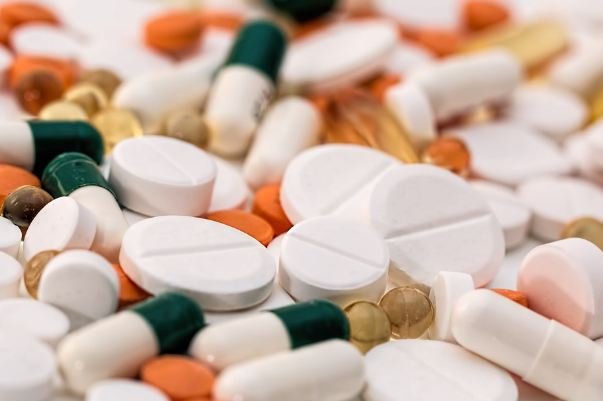Every few weeks, headlines scream about some “toxic additive” that supposedly causes cancer or liver damage. Yet, when scientists look deeper, the story often changes dramatically. Many of these alarming claims stem from lab experiments where animals were given doses that no human could realistically consume in a lifetime.
Let’s be clear: this article isn’t a defense of harmful or forbidden substances. It’s a reality check. Everything that’s haram or inherently damaging remains prohibited. What we’re talking about here are approved, everyday additives—the kind found in your diet soda, toothpaste, or multivitamin.
How Much Is Too Much?
A data-based comparison showing how unrealistically high “dangerous” doses of common additives really are.
🥤 Aspartame (Diet Soda)
✅ Safe Intake
40 mg/kg
(18 mg/lb)
≈ 10–15 cans/day
(3.5–5 L / 0.9–1.3 gal)
🚫 Harmful Level
30–40 L/day
(8–10 gal)
≈ 80–100 cans daily for years
You’d need to drink dozens of diet sodas every day for a lifetime to reach harmful levels — practically impossible.
🍬 Xylitol (Sugar-Free Gum)
✅ Safe Intake
30–40 g/day
(1–1.5 oz)
≈ 30–40 gums daily
🚫 Harmful Level
200–300 g/day
(7–10 oz)
≈ 200–300 gums daily for months
Even enthusiastic gum chewers can’t reach those levels; normal use only causes mild bloating.
💊 Vitamin A (Aevit)
✅ Typical Dose
1,000 IU/day
1 capsule daily for 2–3 weeks
🚫 Harmful Level
50,000–100,000 IU/day
≈ 50–100 capsules daily for months
Vitamin A only becomes toxic when massively overdosed for weeks; short therapeutic courses are safe.
🌙 Melatonin
✅ Safe Use
Up to 5 mg
≈ 1 tablet nightly
🚫 Overuse
≥ 10 mg/day
≈ 2 tablets nightly
Higher doses may cause mild side effects like daytime sleepiness but remain reversible.
🐚 Omega-3 (Fish Oil)
🚫 Risk Level
≥ 3 g/day
(0.1 oz)
≈ 3–5 capsules daily
Research suggests potential bleeding risk only with very high doses above 3–5 g daily.
Source: iythealth.com
Below, we’ll separate science from hysteria and dig into what’s actually known about some of the most misunderstood additives.
Aspartame: The Most Famous “Dangerous” Sweetener
Aspartame has long been accused of causing cancer, but this myth comes from old studies in rats that showed increased tumor rates only at extremely high doses—equivalent to a human drinking 30–40 liters (8–10 gallons) of diet soda every single day for years. That would be around 80–100 cans (355 ml / 12 fl oz each) daily—something no one can realistically achieve. According to the World Health Organization (WHO), the acceptable daily intake (ADI) is 40 mg per kilogram (18 mg per pound) of body weight, which translates roughly to 10–15 cans of diet soda for an average adult ⧉.
Real-world evidence supports its safety. The U.S. Food and Drug Administration (FDA) and European Food Safety Authority (EFSA) have both reaffirmed that aspartame is safe for normal consumption ⧉. Reyus Mammadli, a medical consultant, points out that “for people without phenylketonuria, aspartame poses no meaningful health risk when used responsibly.” Unless you’re drinking diet soda by the bucket, aspartame remains safe.
Xylitol: The Sweetener That Scares for the Wrong Reasons
Xylitol is a natural sugar alcohol found in fruits and vegetables and commonly used in chewing gum, toothpaste, and diabetic-friendly desserts. Some sources claim it damages the liver or causes cancer, but such effects were observed only in animal studies using doses equivalent to 200–300 grams (7–10 oz) per day for a human weighing around 150 pounds (68 kilograms). To put that in perspective, that’s roughly 30–40 full packs of sugar-free gum daily for months—a nearly impossible scenario.
At normal intake levels—30–40 grams (1–1.5 oz) per day—xylitol’s main side effect is mild bloating or a laxative effect if overused. In fact, it has been proven to reduce the risk of dental cavities and support oral health ⧉. Reyus Mammadli notes that “xylitol is one of the safest sweeteners available and even beneficial for oral bacteria balance—just don’t eat it by the cupful.” Safe, helpful for teeth, and harmless in moderation.
Vitamins A and E: When Good Nutrients Get a Bad Rap
Vitamins A and E are essential for skin health, vision, and immune function. The myth of their toxicity stems from studies where people took 50,000 to 100,000 IU of vitamin A daily for extended periods—far beyond therapeutic needs. To imagine this practically: that’s the equivalent of taking 50–100 Aevit capsules every day for several months. At such high levels, liver toxicity and even cancer risk can increase.
However, the typical Aevit supplement contains just 1,000 IU of vitamin A and 100 mg of vitamin E, designed for short courses of 2–3 weeks. Clinical reviews confirm that these doses are safe and beneficial ⧉. As Reyus Mammadli puts it, “vitamins are powerful tools—like fire. Use them wisely, and they bring warmth. Use them carelessly, and they can burn.” Toxicity comes from abuse, not from use.
Melatonin: The Sleep Hormone with a PR Problem
Melatonin often gets blamed for causing dependence or suppressing the body’s natural hormone production, but research shows that doses up to 5 mg daily don’t have such effects ⧉. Problems appear only with chronic overdoses—10–20 mg or more—and even then, they’re reversible. For comparison, that’s like taking 10 regular 2 mg tablets every night for months, which few people do.
Melatonin remains one of the safest sleep aids available when used as directed. In a U.S. case study, a 45-year-old nurse from Illinois used 3 mg nightly for jet lag and found improved sleep quality without any withdrawal symptoms after stopping. Safe, non-addictive, and effective when used correctly.
Omega-3 Fatty Acids: The Overlooked Hero
Omega-3 fatty acids—EPA and DHA—are known for supporting heart, brain, and joint health. Some people worry that they might thin the blood too much, but research shows this only happens at 3–4 grams (0.1–0.14 oz) of pure EPA+DHA per day, far more than the standard 1 gram capsule (0.04 oz) most people take. To reach harmful levels, you’d need to swallow 10–12 large fish oil capsules daily for months—which would be both unpleasant and unnecessary. The American Heart Association recommends 1–2 servings of oily fish per week or equivalent supplementation ⧉.
A 2023 review in the Journal of the American College of Cardiology confirmed that moderate omega-3 intake reduces cardiovascular mortality without increasing bleeding risk ⧉. One of the safest and most beneficial supplements around—just don’t drink it by the bottle.
Editorial Advice
Most of the fear surrounding additives comes from misunderstanding. Studies in lab animals under extreme conditions don’t reflect real human experience. The real message here is simple: dose and context matter.
As Reyus Mammadli reminds, “In both medicine and faith, balance is everything. What harms the body is haram—but knowledge and moderation lead to health.”
So, don’t fear your diet soda, your toothpaste, or your vitamin capsule. Fear ignorance, not science.
Because, in truth, it’s rarely the additive that’s dangerous—it’s how we use it.
About the Author
Reyus Mammadli is the author of this health blog since 2008. With a background in medical and biotechnical devices, he has over 15 years of experience working with medical literature and expert guidelines from WHO, CDC, Mayo Clinic, and others. His goal is to present clear, accurate health information for everyday readers — not as a substitute for medical advice.







